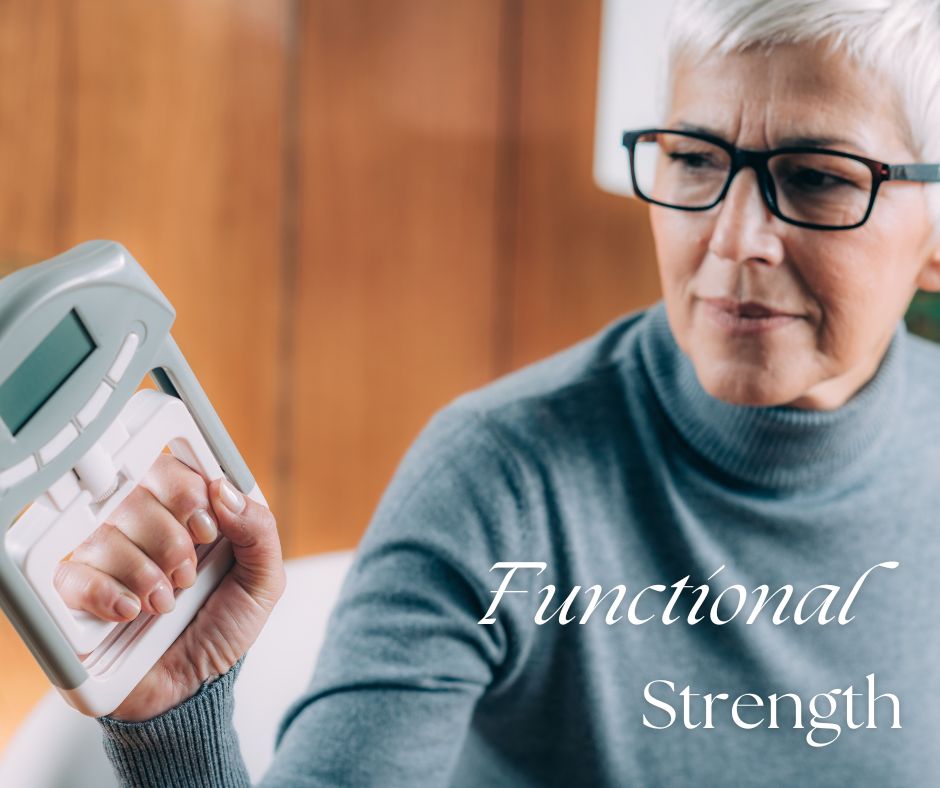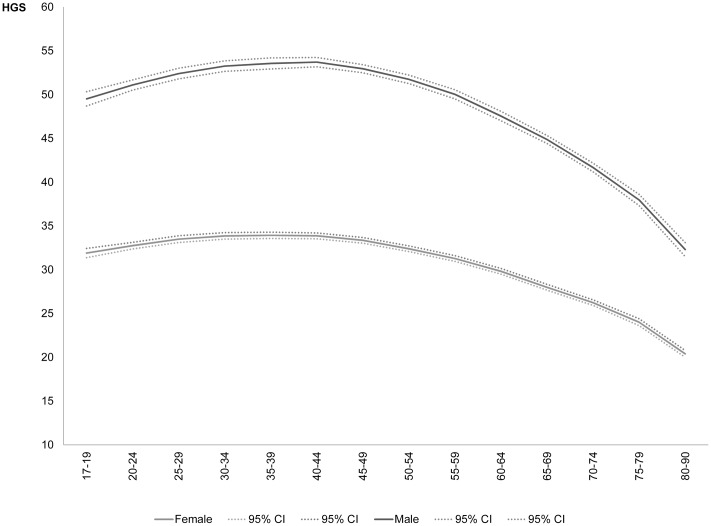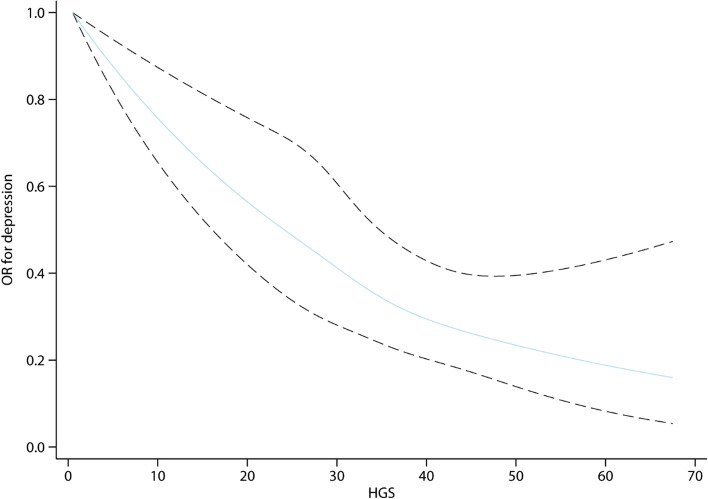The Power of Grip Strength: A Comprehensive Look at Its Relevance and Health Implications

"Handgrip strength is an important biomarker of healthy ageing and a powerful predictor of future morbidity and mortality both in younger and older populations. Therefore, the measurement of handgrip strength is increasingly used as a simple but efficient screening tool for health vulnerability." (Steiber, 2016)
Introduction
Grip strength is an often overlooked yet fundamental aspect of human physical capacity. It is easy to measure and because it correlates to general functional strength and capacity, is a valuable way to track the success of resistance training and lifestyle interventions in slowing and preventing physical decline.
Grip strength itself plays a crucial role in our everyday lives, from opening jars to participating in sports, and it has far-reaching implications for overall health and well-being. In this blog post, we will explore the significance of grip strength, examine how it can be influenced by factors such as gender and height, and delve into the surprising correlations between grip strength, dementia risk, and all-cause mortality.
The Basics of Grip Strength
Grip strength is a measure of the force applied by the fingers and hand when gripping an object. It is a simple yet effective way to assess upper body strength and overall physical fitness. While it may seem like a mundane aspect of human physiology, grip strength is a powerful indicator of an individual's health and functional capacity.
Gender and Grip Strength
Consistent with grip strength being an indicator of overall strength, it makes sense that men tend to have higher grip strength than women. This difference can be attributed to various factors, including hormonal influences and differences in muscle mass and distribution. However, it's important to note that there is significant variability within each gender, and individual factors, such as training and genetics, can also play a substantial role in grip strength.
Height and Grip Strength
Height is another factor that can influence an individual's grip strength. Studies which take account of height show a significant correlation between height and grip strength across all ages and genders. Taller individuals often have longer limbs, which can provide mechanical advantages for generating force. The relationship between height and grip strength is not as straightforward as gender differences. While there may be some correlation, it is important to understand that other factors, such as muscle mass and overall fitness, also contribute significantly to grip strength. In essence, whilst height is relatively fixed, other aspects of strength can be trained.
Grip Strength and Age

Age is a critical factor when considering grip strength. It's a well-established fact that grip strength tends to decline with advancing age. This natural decline is influenced by a variety of factors, including changes in muscle mass, bone density, and joint health.
1. Natural Age-Related Decline
Starting in early adulthood, grip strength typically peaks and remains relatively stable until around the age of 45. After that, it gradually decreases. The decline becomes more pronounced as individuals enter their final decade, with an accelerated reduction in grip strength. This age-related decline is a result of various physiological and hormonal changes, leading to the loss of muscle mass (sarcopenia) and a decrease in the density of bones, which equate to a reduction in overall strength as well as hand strength.
2. Implications for Independence
The age-related decline in grip strength has significant implications for an individual's functional independence. There are direct as well as indirect impacts. We rely on grip strength for everyday tasks such as opening doors, carrying groceries, and even maintaining balance while walking. However indirectly reduced grip strength is indicative of reduced overall strength and this has broader implications for an individuals ability to perform other common physical tasks such as being on your feet for long periods of time, getting up from the floor, or in and out of a car. As strength decreases, these activities can become more challenging, potentially leading to a loss of independence and a lower quality of life.
3. Health and Longevity
Importantly, the age-related decline in grip strength also has connections to health and longevity. Research has shown that individuals with lower grip strength are more likely to experience health issues as they age. For example, reduced grip strength has been linked to a higher risk of falls and fractures, which can be particularly concerning for older adults.
Moreover, studies have indicated that grip strength is not only a predictor of overall health but also a key indicator of future mortality risk. The decline in grip strength is associated with an increased risk of death from various causes. This emphasizes the importance of maintaining strength and muscle mass throughout one's life.
4. Maintaining Grip Strength as You Age
The good news is that age-related decline in grip strength is not entirely inevitable. Regular physical activity, particularly resistance training and strength exercises, can help slow the loss of muscle mass and preserve grip strength. Additionally, a well-balanced diet rich in essential nutrients, including protein and calcium, is crucial for maintaining bone and muscle health.
In conclusion, understanding the relationship between grip strength and age is essential for individuals who wish to age healthily and independently. While grip strength naturally declines with age, there are proactive steps that can be taken to slow down this process. Staying physically active, maintaining a balanced diet, and engaging in strength-building exercises can help individuals preserve their grip strength and overall quality of life as they grow older.
Grip Strength and Health Implications
Now, let's dive into the instructive correlations between grip strength and health outcomes, specifically dementia risk and all-cause mortality.
Grip Strength and Dementia Risk
Recent research has substantiated a connection between grip strength and cognitive health. A study published in the Journal of Alzheimer's Disease in 2019 found that lower grip strength was associated with a higher risk of developing dementia, including Alzheimer's disease. While the exact mechanisms behind this association are still under investigation, it is believed that reduced grip strength may be indicative of overall physical frailty and higher rates of inflammation, which can contribute to cognitive decline.
Grip Strength and Depression in Older Adults
A recent study (May 2023) also showed a correlation between low grip strength and higher incidence of depression in older adults.

Image source: https://pubmed.ncbi.nlm.nih.gov/37193949/
Grip Strength and All-Cause Mortality
In addition to its link with dementia risk, grip strength has also been linked to all-cause mortality. Numerous studies have shown that weaker grip strength is associated with a higher risk of death from various causes. A meta-analysis published in the journal The Lancet in 2015 found that each 5-kilogram decrease in grip strength was associated with a 16% increase in all-cause mortality. This suggests that grip strength is not just a measure of physical fitness but also a powerful predictor of longevity.
Conclusion
Grip strength is much more than a simple measure of hand strength. It can serve as a valuable indicator of an individual's overall health and well-being. Tracked over time, it can serve as a measure for the rate of physical decline experienced by an individual compared to population mean values. It is important to remember that both gender and height are shown to influence grip strength and it is likely that many other factors, such as muscle mass, fitness level, nutrition and genetics, also play a role. These should be considered when estimating individualised risk.
Furthermore, the links between grip strength and dementia risk and all-cause mortality highlight the importance of maintaining and improving grip strength throughout life. Engaging in regular physical activity, strength training, and a healthy lifestyle can help bolster grip strength, and may in turn contribute to better cognitive health and increased longevity.
In conclusion, grip strength is a small yet powerful window into one's physical and mental well-being. By paying attention to this often overlooked aspect of our physical capacity, we can take steps to improve our overall health and potentially reduce the risk of cognitive decline and mortality in the long run.
† Steiber N. Strong or Weak Handgrip? Normative Reference Values for the German Population across the Life Course Stratified by Sex, Age, and Body Height. PLoS One. 2016 Oct 4;11(10):e0163917. doi: 10.1371/journal.pone.0163917. PMID: 27701433; PMCID: PMC5049850.



